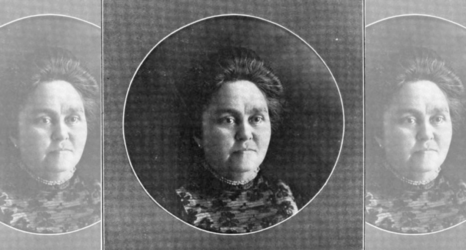“We now have robust evidence that providing early medication abortion using a model that has no clinical tests and is done by telemedicine is just as safe and effective as a fully in-person model.”
This article was updated on March 1 at 5:01 p.m. PST.

For years, anti-abortion advocates have claimed the abortion pill is dangerous. In 2000, when the U.S. Food and Drug Administration approved the abortion pill for sale in the U.S., they bowed to anti-abortion pressure by placing the abortion pill under a drug safety program that requires doctors to distribute the pills in person to their patients.
That restriction, still in place today, bars the use of telemedicine abortion in the U.S., even during the pandemic—despite strong evidence that telemedicine abortion is safe and effective. This evidence just became much stronger. A new study out of the U.K. provides the first real-world evidence in a national population that no-test telemedicine abortion is just as safe and effective as in-person abortion health care. Ironically, this study was published the same week that abortion opponents re-introduced legislation seeking to ban the use of telemedicine for medication abortion care in the U.S.
Before the pandemic, the standard medical protocol for medication abortion in the U.K. required patients to make an in-person visit to their health care provider for an ultrasound scan and to receive the abortion pill. When COVID-19 hit, the Royal College of Obstetricians and Gynaecologists published new guidelines for medication abortion: Consultations were encouraged to take place by telephone or video call and an in-person visit and ultrasound scan were required only if indicated.
By the end of March 2020, the British government had issued emergency legal orders allowing no-test medication abortion where abortion providers could treat their patients via telemedicine and mail abortion pills to their patients to take at home.
This shift in policy allowed researchers for the first time to assess a real-world no-test telemedicine abortion care model in a national population. Researchers compared patients receiving the traditional in-patient model of care, with in-clinic ultrasounds, to a telemedicine-hybrid model where patients are screened for eligibility for telemedicine abortion care without an ultrasound. Based on a sample size of 52,142 people, researchers found that no-test telemedicine abortion model is just as safe and effective as the traditional in-person medication abortion model. Patients actually preferred this option to the in-person model.
“We have now robust evidence that providing early medication abortion using a model that has no clinical tests and is done by telemedicine is just as safe and effective as a fully in-person model,” said the study’s lead author, Abigail Aiken, Assistant Professor in LBJ School of Public Affairs at the University of Texas at Austin. “That is particularly significant because we have so many state laws here in the US that are set up to prevent exactly that type of a model from being put into place. This study is showing us that there is really no reason in terms of safety, or effectiveness, or indeed patient acceptability not to go ahead with that kind of model.”
In the United States, in addition to the FDA restriction, nineteen states require the clinician providing a medication abortion to be physically present when the medication is administered, thereby prohibiting the use of telemedicine to prescribe the abortion pill remotely.
“This restriction is not based on medical evidence,” said Dr. Daniel Grossman, an ob/gyn, abortion provider, and director of the University of California, San Francisco’s Advancing New Standards in Reproductive Health (ANSIRH). The Supreme Court upheld this restriction in January.
In the U.K., under the telemedicine-hybrid model, clinicians screen patients to determine whether they are eligible for no-test medication abortion. If patients are certain of the date of their last menstrual period, and are less than ten weeks pregnant, then clinicians instruct patients on how to use abortion pills via teleconference and mail the pills to the patient. Clinicians are available by telephone or videoconference throughout the process if patients have any questions or concerns.
If patients are not sure how pregnant they are, or have symptoms of an ectopic pregnancy (a pregnancy occurring outside the uterus, which is dangerous), they come into the office for an ultrasound. About 65 percent of patients were able to use the telemedicine model.
Dr. Aiken and her colleagues found that telemedicine abortion delivered health care as well or better than in-person clinic care. The effectiveness of the treatment remained the same for abortions carried out through the traditional in-person service and the no-test telemedicine service: 98.8 percent were able to end their pregnancies without any further intervention (vs. 98.2 percent for in-clinic abortion).
In-clinic and telemedicine abortion were equally safe, with similar, very low rates of serious adverse events (0.02 percent vs. 0.04 percent) and the same incidence of ectopic pregnancy (0.2 percent). Treatment with abortion pills has no effect on the underlying ectopic pregnancy, and in fact may lead to earlier detention of this dangerous condition than the traditional model of care. There were no cases of significant infection requiring hospital admission, major surgery or death.
With telemedicine, women reliably reported their last menstrual period, with only 0.04 percent estimated to be over 10 weeks’ gestation at the time of the abortion. In all of these cases, abortions were completed safely at home. In fact, overall effectiveness was higher with telemedicine than in-person care (99.2 percent vs. 98.1 percent). Patients were also highly satisfied with telemedicine abortion (96 percent satisfied) and 80 percent reported a future preference for telemedicine abortion.

Telemedicine abortion was in fact superior to in-clinic care in several respects. For example, patients received treatment more quickly. Whereas wait times for in-clinic medication abortion was 10.7 days, wait times for patients using the new no-test telemedicine model was only 6.5 days, 4.2 days shorter.
“When someone is experiencing a pregnancy that they don’t want, the longer are kept waiting to end that pregnancy, the more likely they are to experience anxiety, stress, and negative emotions,” said Aiken. “In terms of good patient care, allowing people to access services when they want to access them is a patient-centered thing to do.”
As a result, patients are able to receive care much earlier in their pregnancy—with duration of the pregnancy at the time of the abortion significantly reduced with the telemedicine model of care. Only 25 percent of in-clinic medication abortion occurred at or before 6 weeks, whereas 40 percent of telemedicine abortions did. Earlier treatment decreases patients’ experiences of nausea or other negative symptoms of early pregnancy.
Telemedicine abortion is also less expensive, said Aiken. “If we require patients to come to a clinic, maybe on more than one occasion, if we are asking them for a waiting period or to come for an ultrasound and then come back for a clinical test and come back for the abortion pills—that adds up because it’s not just clinician time we have to pay for, it’s also travel costs, it’s also time off work costs, it’s also perhaps even child care costs. So the more you can establish the medication abortion procedure through telemedicine and in somebody’s home, the more costs you can avoid to both the patient and the healthcare system.”
Affordability is particularly important in the U.S. because, unlike the U.K., the United States does not have universal health care and many patients are paying for abortion health care out of pocket. Medicaid does not cover abortion and many states block private insurance plans from including abortion. Moreover, anti-abortion laws have led to the closure of many clinics so that patients often have to travel long distances to reach in-person care, which also increases their likelihood of exposure to COVID-19.
The telemedicine-hybrid model of care also decreases the number of patients seeking medication abortion outside the formal healthcare setting. In research published last January, Aiken found that demand for medication abortion from abroad through the online telemedicine service Women on Web during COVID-19 decreased significantly in Great Britain, which she attributes to the implementation of a fully remote no-test telemedicine abortion service. In other countries, such as Northern Ireland and Portugal, where abortion services were provided mainly in person in hospitals or abortion was unavailable and international travel was prohibited during lockdown, demand for telemedicine abortion from Women on Web went up significantly.
Aiken said the evidence for the safety and efficacy of telemedicine abortion is compelling. “We have the outcomes of over 50,000 medication abortions in the before service change and after service change period. It’s a really big sample size and that helps us to be confident in our estimates. The bigger the sample size, the sharper the estimates of safety and effectiveness,” said Aiken. “We also were able to account for 85 percent of all the abortions that took place during our study period. So we feel pretty good about applying the results of that study to the population because we have such a large and widespread sample.”
Aiken hopes that her research will help persuade the U.S. FDA to permanently lift its burdensome and medically unnecessary restriction on the abortion pill.
On February 9, the House Oversight Committee, led by Rep. Carolyn Maloney (D-NY), wrote a letter to the Acting Commissioner of the FDA Janet Woodcock urging her to lift the abortion pill restriction. Meanwhile, the National Women’s Health Network is leading a “Get the Pill At Home!” campaign to pressure the FDA to act now.
“We don’t need more evidence, but it’s good to have evidence, especially since the Biden administration keeps sending this message of follow the science,” said Clare Coleman, president and CEO of the National Family Planning & Reproductive Health Association.
“Facts matter, and the facts couldn’t be clearer,” wrote Guttmacher Institute president and CEO Herminia Palacio and Dr. Daniel Grossman in a recent op ed in The Washington Post. “In this moment, when the country is looking to the administration to heed public health experts, it must suspend this requirement for the duration of the public health emergency and direct the FDA to ensure its medication abortion policies are aligned with the scientific evidence.”
You may also like:





